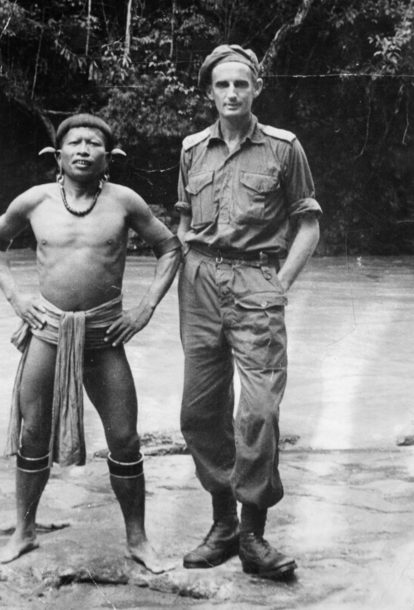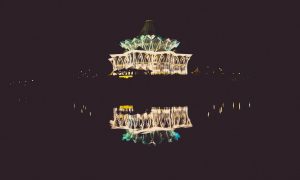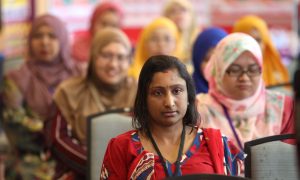ANU Malaysia Institute Director Ross Tapsell talks with ANU Emeritus Professor Christine Helliwell about her new book, Semut, which details the story of Australians and Dayaks fighting together in Sarawak during WWII.
Ross Tapsell (RT): Tell us how you began researching societies in Borneo?
Christine Helliwell (CH): As an undergraduate student studying anthropology in Auckland I read a book by anthropologist Bill Geddes, Nine Dayak Nights, and I just thought the Dayaks sounded like wonderful people. So when I went on to undertake a PhD at the ANU, I selected Dayaks as the people I would work with. I did my PhD research in Kalimantan in the 1980s and I’ve worked with Dayak people ever since. I’ve only recently come to work with Dayaks in Sarawak. I initially—for my PhD research—wanted to study life in a longhouse. Dayaks are often described as almost individualistic and as having highly nucleated household structures, and I was interested in how that articulated with a broader longhouse community.
RT: How do you then end up writing a popular book on WWII history?
CH: Around eight or nine years ago I was looking back through old field notes from Kalimantan in the 1980s and I realised I’d collected quite a few memories around WWII in Borneo. No one had written about Dayak memories from WWII in Borneo. The Japanese had occupied the entire island and then the Australians came in to liberate the island. So I sold the Australian War Memorial (AWM) on the idea of a joint research project on Borneo.
Initially I thought I’d go to Kalimantan but it was really difficult to get research visas [to Indonesia], and in fact it still is. So I decided to go to Sarawak [in Malaysia] instead where I knew I’d have much less problems getting a visa. From there I did quite a lot of fieldwork, interviewing mostly Dayaks throughout Sarawak and Sabah.
Then I heard that there were three old veterans still alive in Australia from a WWII operation that had taken place in Sarawak. I interviewed them and discovered they were from a secret operations unit, called Special Operations Australia (SOA). And I discovered that because SOA was a secret unit, it had never been officially recognised with a plaque at the AWM. So I lobbied the AWM, along with the veterans, and there was a plaque installation ceremony. I did a lot of media work for the ceremony, and as a result of that a literary agent contacted me and asked me if I’d like to write a book for a popular audience about the Sarawak special operation. This was the first time it ever occurred to me to write anything other than an academic anthropological description of the effects of WWII on Dayaks. And the rest is history!
RT: Anthropologists tend to not write war histories, and female scholars are rare in this field. Would you say your book is radically different from other WWII histories that people may have read previously?
CH: Reviewers have described it as qualitatively different from other war histories because of the content about Dayak peoples and the Dayak contribution to the operation. That does make it different from other war histories and official reports of WWII in Borneo where the Dayaks—and other local people—are barely mentioned. For me the Dayaks are the key to the whole story.
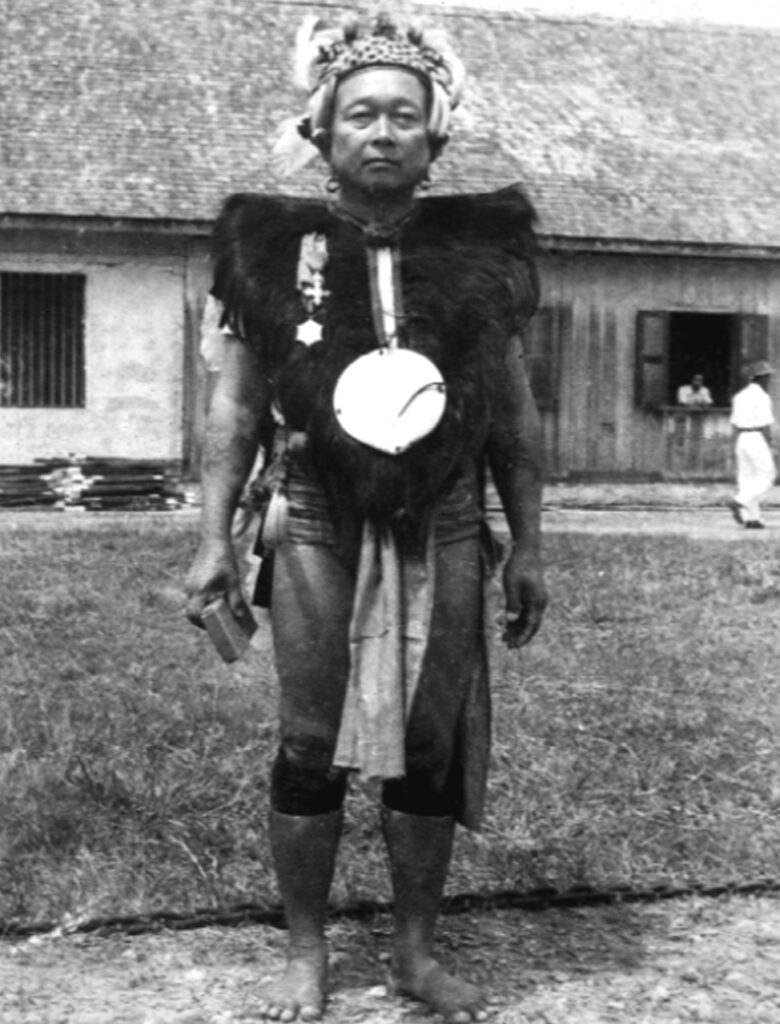
2. The great Kenyah chief Tama Weng Ajeng, in a photo taken shortly after the war. He is wearing medals presented to him by the British, including the MBE on his right breast, in recognition of his role during Operation Semut. Source unknown.
RT: Why do you think they are so underrepresented?
CH: If you look at the history of WWII right through the Pacific and Asia, where the story is written by Western military historians, it comes to be about Western soldiers and Western people, and the locals just become part of the wallpaper. Even though when you actually sit down and look at what happened, the locals were key participants in all of these war activities.
RT: I note that you write “tragically I have been unable to achieve my key aim of including a list of all the local guerrillas”. I guess a lot of the material is from Western written accounts. Is that part of the issue? That it’s hard to find written accounts from the Dayak perspective and also a lot of your interlocutors had passed away?
CH: Yes, the military reports written at the time barely mention the local people. Even though, logically, it cannot be possible that these white soldiers were doing all these things without local language and without a knowledge of place, unless all these locals took part. So contemporary historians are looking at written sources in which locals simply don’t figure. I interviewed more than 120 local Borneo people, old people, who still remembered the war. And they had a completely different perspective on what had happened [from the official sources]. And the old Australian veterans I interviewed also gave me a different perspective from what I found in the official reports.
RT: What were the locals—in their 80s and 90s—mostly wanting to tell you?
CH: Most of them just wanted to describe the Japanese occupation. The Japanese in Borneo had been brutal and cruel towards the local population, and had taken people’s food. And this was what people wanted to tell me: “we starved, they were taking our food”. There were over 20,000 Japanese in Borneo by the end of the war. The Allied blockade on shipping meant that food wasn’t getting to the island, so the Japanese were taking food from the local people who were completely dependent on the rice they were growing. So everybody was starving.
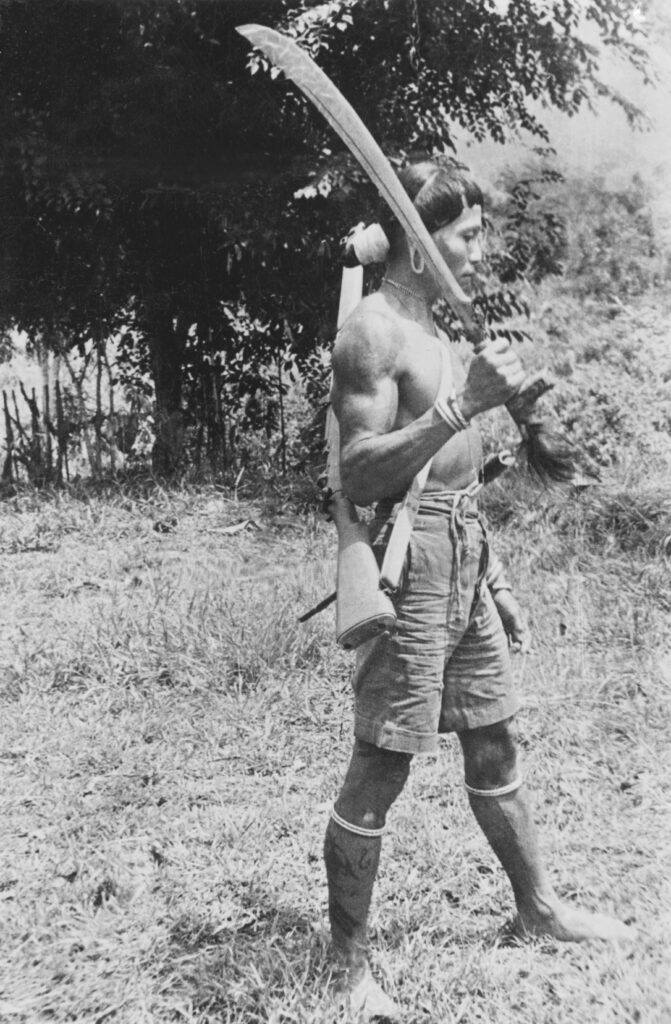
An Operation Semut Iban guerrilla with a rifle slung over his back and a parang in his right hand. Collection of the National Archives of Australia (CC BY-NC-ND) 4.0
Then I would ask questions about the operation and they would add bits of information. “Yes, there were white soldiers staying at the longhouse, yes they did go to that town, a whole lot of our people went with them, this is what happened”. But they were less interested in telling me those stories than in telling me stories about the overall experience of the occupation.
RT: Headhunting features prominently in the book. How did you negotiate its centrality to the story without falling into the trap of the ‘morbid fascination’ that permeates much of previous Western accounts of Sarawak tribes’ practices of headhunting?
CH: I struggled with the whole issue of headhunting because it is central to the operation, and it’s still a sensitive topic in Sabah and Sarawak. And understandably so because headhunting has always been used as a kind of trope in the West: when we talk about Borneo it’s as these “primitive headhunting savages”. The [Australian] operatives went in there and encouraged local Dayak groups to take up headhunting against the Japanese, even though headhunting had been banned since the 1840s. In fact they were paying Dayaks to take it up.
So I was worried about how I could write about it: I feared that it would make these people look savage and primitive. But then I thought “it has to be there”. So I decided the best thing I could do was to put that trope aside and explain what headhunting was used for, that it was an important religious ritual to cut off the head of your dead enemy and take it home to your longhouse and incorporate it into your longhouse community. It gave your community increased potency, fertility; the head became a member of your community. It’s a religious ritual that’s about respect and incorporation into the community. So I dealt with the issue as an anthropologist, explaining what headhunting was all about. It’s not just some savage person engaging in a burst of bloodletting as it’s often been portrayed in the popular literature.
Once you start to understand headhunting in its own context, it becomes very difficult to see it as any worse than a whole lot of other practices of war that Western nations routinely engage in that are regarded as perfectly legitimate—blowing people to bits with a grenade or dropping nuclear bombs on them. Interestingly, headhunting was never mentioned in the official documents relating to the operation, I think because it went against the Geneva Convention. But as an anthropologist I find it strange and interesting that it’s regarded as denigration of a body to take its head home to honour it, and not denigration to blow it to pieces with a grenade. So I wanted to say to the readership: just stretch your thinking and recognise that this is simply another way of doing war, no worse and no better than other ways.
RT: The other issue that struck me in the book was the massacres of Chinese settlers by Iban—including headhunting—which seemed a difficult topic to negotiate for an author. You write about the role WWII Australian involvement played in ‘heightening racial tensions’ between Iban and Chinese and the ‘lasting friction’ from that period.
CH: Yes, again this was another issue that I had to ponder over how to write about it. There’s no doubt that around 50-60 Chinese settlers living down the Rejang River were actually killed and their heads taken by Ibans during the Semut operation. Chinese were also killed in other parts of Sarawak. Some Dayaks, most particularly Ibans, felt that the operatives paying for heads wouldn’t know the difference between a Japanese head and a Chinese head, so they were actually taking Chinese heads to leaders of the operation to try to get payment. I can’t give you any more information on those lasting tensions because I got that from secondary sources—from historians like Ooi Keat Gin, Bob Reece and so on. When I interviewed along the Rejang River no one mentioned the killing of Chinese by Ibans, so I think today that’s maybe slipped out of memory. But yes, it was a difficult thing to write about because I felt it would be sensitive in Sarawak.
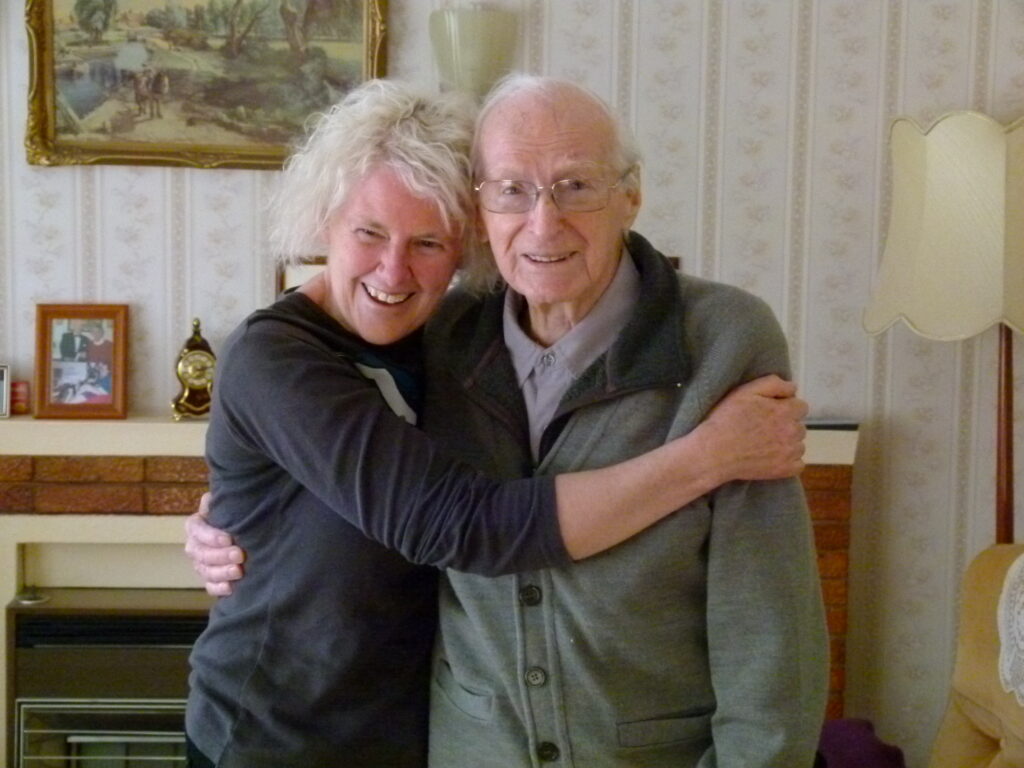
Christine Helliwell with Operation Semut veteran Jack Tredrea at his home in Adelaide. Jack died in 2018.
RT: Were there other topics that were sensitive during your fieldwork?
CH: I was a little bit worried because Dayaks today have been largely Christianised and so they’ve given up old traditions like following omens or drinking parties that occurred in the past as part of sociality and hospitality, all of which are described in the book. A lot of Dayaks today prefer to forget about the fact that they relied on omens and so on in the past. But actually, people in Sarawak have been very positive about the book, so I think I worried unnecessarily.
RT: What’s next for you? You talk in this book about the need for a follow-up book. Why do we need a follow-up one?
CH: This book only discusses half the operation. Operation Semut was divided into four parts: Semut I, II, III and IV. This book only discusses Semut II and III. Partway into the project I suddenly realised I couldn’t write about all four parts of the operation in a single book. So this book only deals with Semut II along the Baram River and Semut III along the Rejang River. I’m still to write about Semut I in the Kelabit Highlands, which was the largest part of the operation and was led by Tom Harrison, whom a lot of Malaysians would know because he was the Director of the Sarawak Museum after the war. Also Semut IV, which took place along the northern coast of Sarawak. They raise different questions from Semut II and Semut III.
This written interview has been reduced for clarity and length. The extended interview will be uploaded to the ANU Malaysia Institute website https://malaysiainstitute.anu.edu.au.
You can buy Christine Helliwell’s book, Semut, at Penguin via this link.
 Facebook
Facebook  Twitter
Twitter  Soundcloud
Soundcloud  Youtube
Youtube  Rss
Rss 